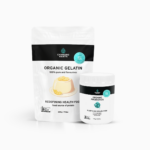With this wonderful information about black rice what is stopping you from adding 3 TBS of black rice to your next rice dish.
Black rice – revered in ancient China but overlooked in the West – could be one of the greatest “superfoods”, scientists say.
The cereal is low in sugar but packed with healthy fibre and plant compounds that combat heart disease and cancer, say experts.
Centuries ago it was known as “Forbidden Rice” in ancient China because only nobles were allowed to eat it, writes John von Radowitz of PA.
Today black rice is mainly used in Asia for food decoration, noodles, sushi and deserts.
Food scientist Dr Zhimin Xu said: “Just a spoonful of black rice bran contains more health promoting anthocyanin antioxidants than are found in a spoonful of blueberries, but with less sugar, and more fibre and vitamin E antioxidants.
“If berries are used to boost health, why not black rice and black rice bran?
“Especially, black rice bran would be a unique and economical material to increase consumption of health-promoting antioxidants.”
Bran is the hard outer coating of a cereal grain that is often removed during processing.
Research suggests that plant antioxidants, which mop up harmful molecules, can help protect arteries and prevent the DNA damage that leads to cancer.
Anthocyanins provide the dark colours of many fruits and vegetables, such as blueberries and red peppers. They are what makes black rice “black”.
Food manufacturers could potentially use black rice bran or bran extracts to make breakfast cereals, beverages, cakes, biscuits and other foods healthier, said Xu, from Louisiana State University in Baton Rouge, US.
When rice is processed, millers remove the outer layers of the grains to produce brown rice or more refined white rice – the kind most widely consumed in the West.
Brown rice is said to be more nutritious because it has higher levels of healthy vitamin E compounds and antioxidants.
But according to Xu’s team, varieties of rice that are black or purple in colour are healthier still.
The scientists, whose findings were presented at the 240th National Meeting of the American Chemical Society in Boston, analysed samples of bran from black rice grown in the southern US.
They found boosted levels of water-soluble anthocyanin antioxidants.
The pigments in black rice bran extracts produced a variety of different colours, ranging from pink to black.
Another food industry application for black rice could be using the pigments as healthier, natural colorants, said Xu.
Studies linked some artificial colorants now used in foods to cancer and behavioural problems in children.
by aap September 02, 2010








0 Comments